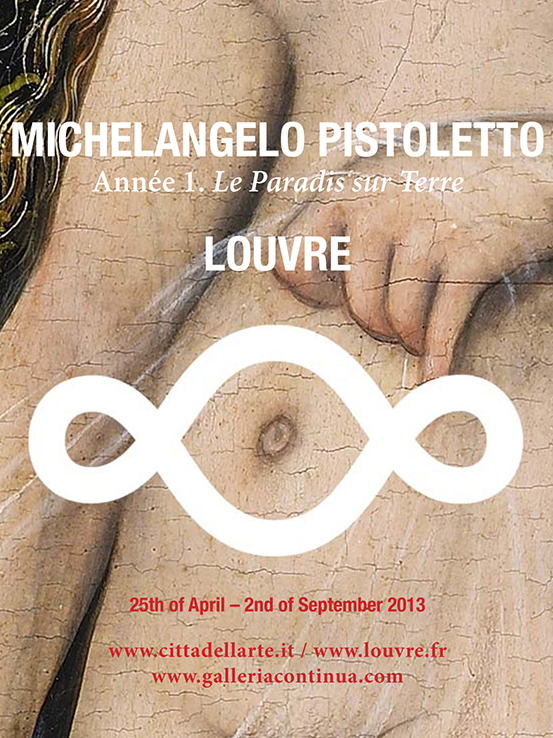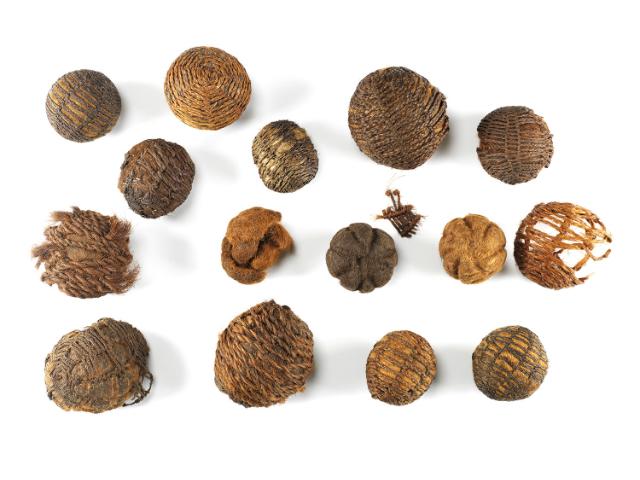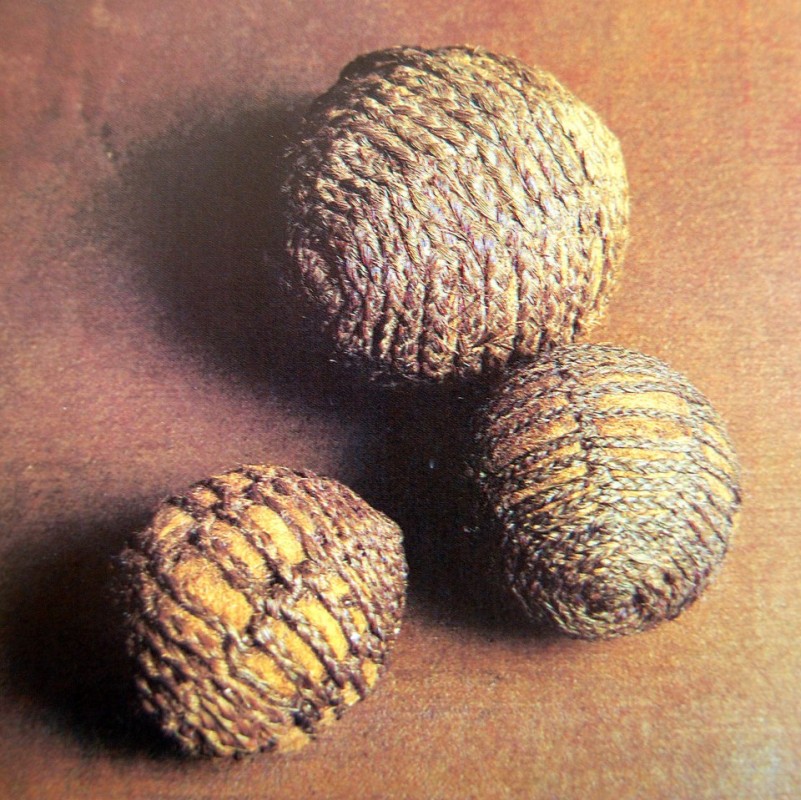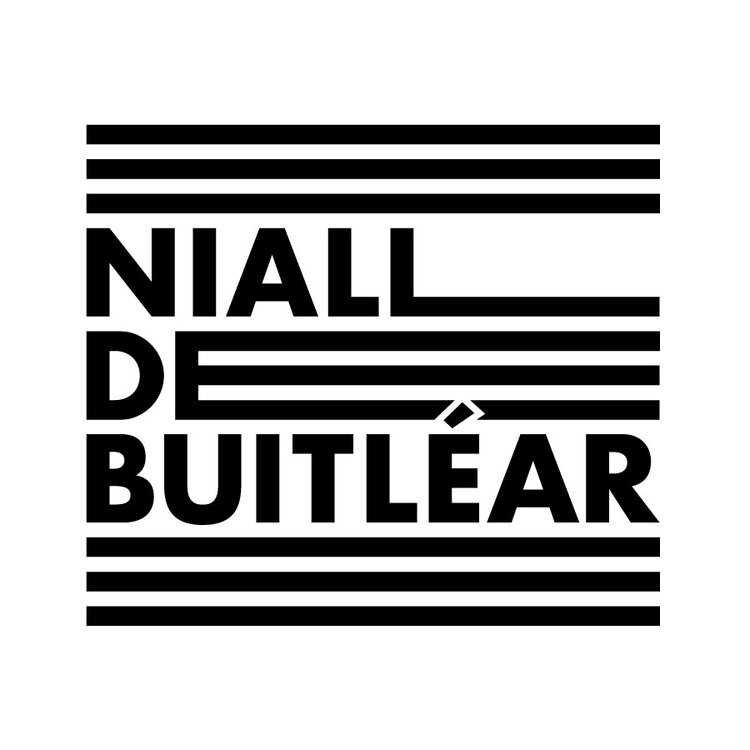A Korean bronze seal, Koryo dynasty (918-1392) from the collection of the V&A
museums
Michelangelo Pistoletto Poster

Sliotars Dating back to the 12th Century

These Sliotars above are from a new exhibit Hair hurling balls: Earliest artefacts of our national game, at National Museum of Ireland – Country Life in Castlebar. The earliest was made in the second half of the twelfth century.
The balls are made from matted cow hair with a plaited horsehair covering. The National Museum of Ireland claim there is a link between the name 'sliotar' and the Irish word ‘liotar’, meaning ‘hair’.

Via Meath Chronicle and Nótaí Imill
Woven Silver Cone from 10th Century Dublin
There are three separate strands of silver, each composed of between 15 and 18 wires. Yet, Halpin says, it is very hard to find where all these wires end. The visual effect is that of a single thread turning endlessly around itself. There are traces of some kind of organic material inside the cone, probably a wax shape around which the wires were woven. The visual imagination and the physical deftness required to do so are of the highest order.
This artefact is housed in the National Museum of Ireland and the text and image above come from the Irish Times' History of Ireland in 100 objects
Documentary About 8th Century Book Found in a Bog
 Treasure from the Bog is an RTE documentary about the Faddan More Psalter. The book is described as:
Treasure from the Bog is an RTE documentary about the Faddan More Psalter. The book is described as:
a fragmented illuminated vellum manuscript encased in an unusual leather binding, a book of psalms dating back to the late eighth century. This unprecedented find, the first manuscript to be found in a water-logged state in a bog, posed unique and profound difficulties for the Conservation Department at the National Museum.
The image above is a screen grab from the documentary showing scraps of words recovered form the book. Larger sections of the book were also recovered including full pages and the cover which was lined with the only piece of papyrus ever discovered in Ireland.
Walkthroughs of IMMA Shows on Vimeo
Tania Kovats - Tree
 Here's a video documenting the production of Tania Kovats' artwork Tree made for the Natural History Museum in London.
Here's a video documenting the production of Tania Kovats' artwork Tree made for the Natural History Museum in London.
The artwork is a slice cut from the centre of a real oak tree and was inspired by the work of Charles Darwin.
Katie Holten's Tree Museum
There's an article in today's Irish Times about Katie Holten's Tree Museum and her upcoming show at the Hugh Lane as a part of the Golden Bough series. The Tree Museum was a public artwork that examined people's relationships to trees in the Bronx area of New York through an audio guide featuring recordings of local people. Below is a short video about the Tree Museum and the audio recordings are available through her website.
Video Slideshow of Found Bookmark Project
A series of objects collected from between the pages of books in public libraries in Dublin during the summer of 2009. Each object is captioned by the title of the book in which it was found. This video was produced as a part of an installation at the National Library in Dublin as a part of the offsite exhibition Preponderance of The Small organised by the Douglas Hyde Gallery. More info at preponderanceofthesmall.blogspot.com/
Images of Installation at the National Library



These images are of the latest installment of my ongoing Found Bookmark Project which is currently on show at the National Library on Kildare Street in Dublin. The piece (which involves a collection of objects found in libarary books over the Summer) was made for Preponderance of The Small, "an off-site project which forms part of The Douglas Hyde Gallery's ongoing Gallery 3 initiative, featuring works by twenty-one younger artists working in Ireland."
Irish Art Museums Told To Be "More Populist"
The assistant secretary general at the Department of Arts, Sport and Tourism, Niall O’Donnchu, has written to the directors of several national institutions, including the Irish Museum of Modern Art (Imma), the National Gallery of Ireland and the Crawford Art Gallery, suggesting they seek out “commercial opportunities” for their organisations, and adopt “more populist” exhibition policies.
A copy of one of the letters, seen by The Irish Times, states that while acknowledging that the institution already pursues “commercial opportunities and businesses . . . We would ask, however, that you and your board take a focused opportunity to examine afresh whether all commercialisation and commodisation [sic] opportunities are being exploited to the maximum by you”.
After querying the institution’s exploitation of merchandising and related activities, the letter also examines policy and programming and asks: “Could your exhibition policies be more populist?”
Quoted from an article in yesterday's Irish Times - full text here


